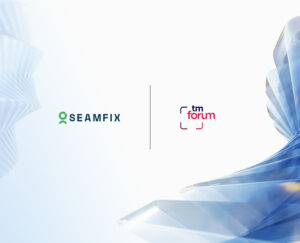Decentralized Identity and Blockchain in IAM
In today’s digital world, where data breaches and identity theft are becoming everyday headlines, securing access to sensitive information has never been more critical. Identity and Access Management (IAM) solutions help organizations manage who gets access to what, but traditional IAM systems are facing new challenges. Enter the game-changers: Decentralized Identity and Blockchain in IAM. These emerging trends are transforming IAM as we know it, making security stronger, privacy better, and access management smarter.
What is IAM, and Why Does It Matter?
IAM (Identity and Access Management) is the framework that ensures the right people have the right access to the right resources at the right time. Think of it as the digital version of a security guard at the entrance of a building, deciding who gets in and what doors they can open.
Traditional IAM systems are usually centralized, meaning a single organization (or provider) controls the identity data. This setup has worked for years, but it has some problems—security risks, privacy concerns, and a lack of user control over personal data. This is where Decentralized Identity (DID) and Blockchain step in to shake things up.
Decentralized Identity: Putting Users in Control
Decentralized Identity (DID) is a new approach that shifts control of identity from centralized authorities (like companies or governments) to individuals themselves. Instead of relying on a company like Google or Facebook to verify your identity, you use a self-sovereign identity (SSI) stored in a digital wallet on your device.
Here’s how it works:
- You get a unique digital identity stored securely on your device.
- Organizations can verify your credentials without storing your personal data.
- You decide who gets access to your information and for how long.
This approach means fewer data breaches because there’s no single central database to hack. Plus, users regain control over their data, improving privacy and security.
How Blockchain is Changing IAM
Blockchain—the technology behind cryptocurrencies like Bitcoin—is also making waves in IAM. At its core, blockchain is a distributed ledger that records transactions securely and transparently across multiple computers.
When applied to IAM, blockchain:
- Ensures tamper-proof identity verification
- Eliminates the need for middlemen (like banks or government agencies)
- Reduces the risk of fraud and identity theft
For example, imagine an employee onboarding system where credentials (like degrees, certifications, or background checks) are stored on a blockchain. Instead of calling universities or previous employers, HR can instantly verify the candidate’s credentials without worrying about forgery.
The Benefits of Decentralized IAM
- Better Security: No central database means hackers have no single point of attack.
- Enhanced Privacy: Users control their data and choose what to share.
- More Efficiency: Faster and more reliable identity verification.
- Interoperability: Works across different organizations without the need for multiple logins.
Real-World Applications
Industries like healthcare, finance, and enterprise security are already exploring decentralized IAM solutions. From secure patient records in hospitals to digital passports for travelers, decentralized identity and blockchain are solving real-world problems.
Where Seamfix iAM Fits In
At Seamfix, we’re all about simplifying identity and access management for businesses. Our solution, Seamfix iAM, is designed to be scalable, easy to implement, and secure—helping organizations ensure that employees, contractors, and partners have the right access, at the right time, with the right security. As IAM continues to evolve, Seamfix iAM stays ahead of the curve, embracing innovative technologies to make identity management seamless.
The Future of IAM is Here
The shift towards decentralized identity and blockchain in IAM isn’t just a passing trend—it’s the future. As businesses and individuals demand more control, more security, and more efficiency, these technologies are paving the way for a safer digital world.
Are you ready to embrace the future of IAM? It’s time to rethink identity management and explore solutions that put security and privacy first.






